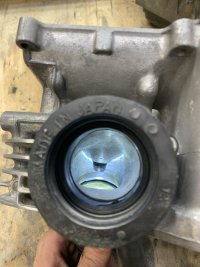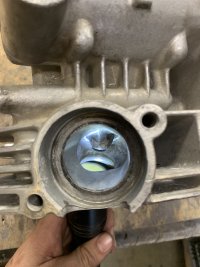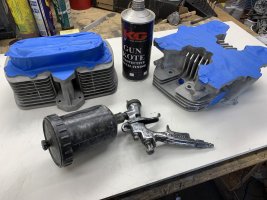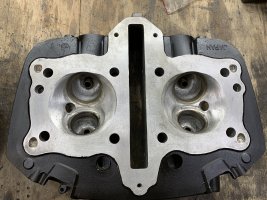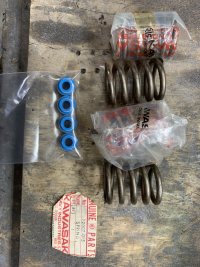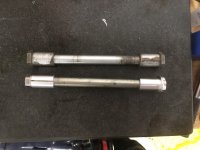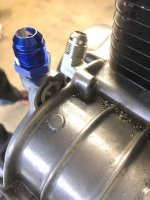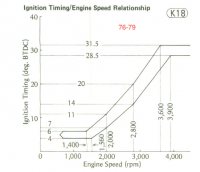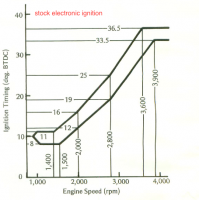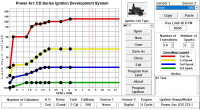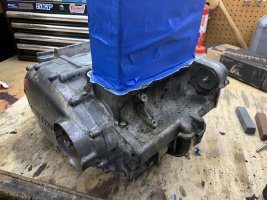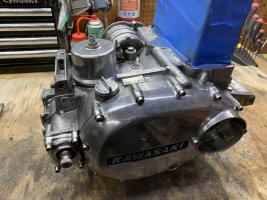This project is pivoting. I have decided to build a track/race version with the big bore engine. I've started a build thread
HERE if you are interested.
As for this bike I will be building a nice, fairly stock engine.
I had 3 spare engines lined up and I chose the best one from the bunch. Other than being stored with an exhaust valve open this may be the cleanest engine internally I have every seen. It must have had low miles because everything is barely worn, evident by the cross-hatching in the bores, and the small end of the connecting rods looks mint. Because of that I'm just going to clean it up and rebuild the top end.
I started by tearing the cylinder head down, polished all the fins back how I like them, sand blasted, re-polished the fins, and painted with Gun Kote Satin Black. After the paint is dry I wipe the fins clean with acetone before baking the paint. I then do one last polish with 320 so the fins are super bright. I find this process gives me really well defined fins and reduces the risk of damaging the paint during fin polishing significantly
I also took the time to polish the intake and exhaust runners and to blend in the valve seats. This is a common issue on these heads; the ports and valve seats are not aligned very well and leave a sharp internal edge. I'm no porting expert but I know that this is bad for flow. Other than that I mostly just removed the large casting flash present in the runners and tried not to remove much material as these ports are already too big for stock displacement. I also took the time to port match the carb boots, and polish the combustion chambers.
Now its time for a thorough cleaning in the parts washer before going out for a 3 angle valve job and getting the head decked. I will be using NOS valve springs (the big ones, cant find the small ones) along with high quality teflon valve seals.
